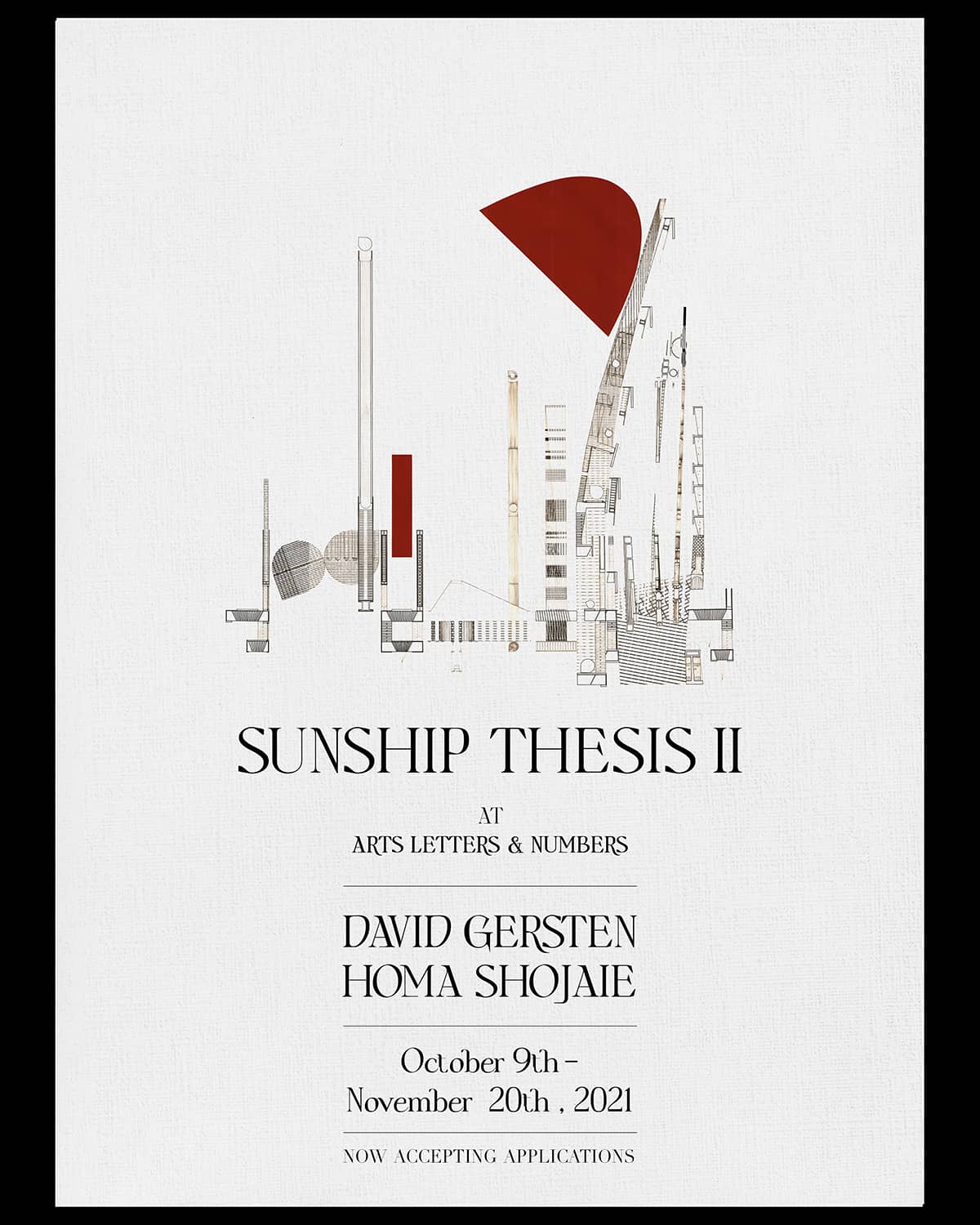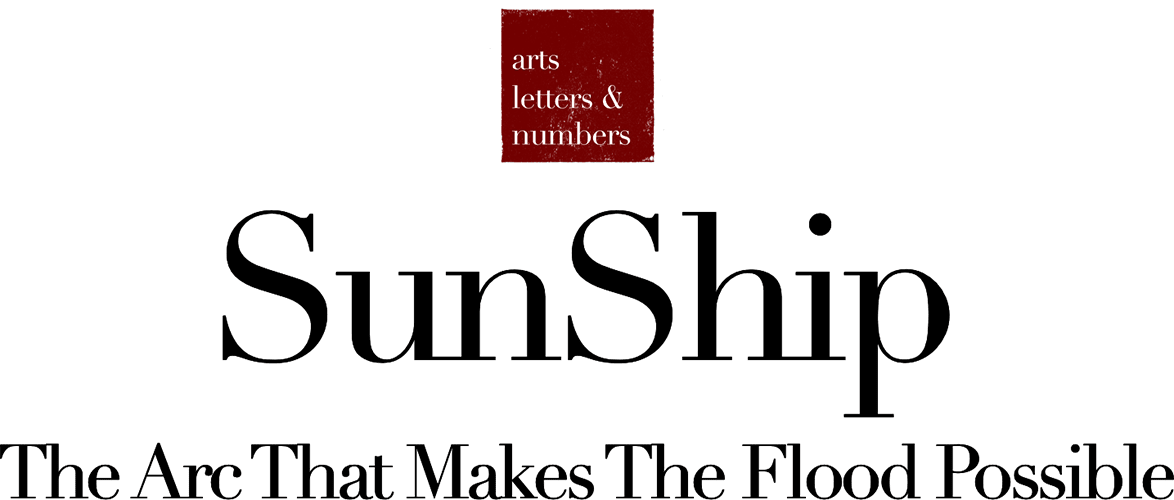SunShip: Thesis II at Arts Letters & Numbers
-
David Gersten
-
Homa Shojaie
Profile

Arts Letters & Numbers is pleased to announce “SunShip: Thesis at Arts Letters & Numbers”, a six-week immersive virtual studio program led by David Gersten and Homa Shojaie. The Studio program is being held as part of “SunShip: The Arc That Makes The Flood Possible,” Arts Letters & Numbers’ exhibition in the CITYX Venice Italian Virtual Pavilion of the 17th Venice Architecture Biennale.
SunShip: The Arc That Makes the Flood Possible
Tens of centuries ago, trees of enormous scale were cut, trimmed, skinned of their bark, and bound together using a particularly robust fibrous rope for the construction of rafts that anticipated the crossing of the great raging seas. Although strong, this rope was not often used near the sea; salt broke down its fiber, sea salt ate away its strength. The trees were bound in such a way that the rolling motion of the sea dug the rope into the soft wood of the trees; the particular knot and binding allowed the push and pull of the sea to work the rope into deep grooves in the wood. In time, as the wood swelled in the water, the grooves closed around the rope, sealing and protecting it from the sea salt. These knots anticipated their own transformation. They are knots in time, space and substance, capturing a wonderful enigma: the strength of fragility, the fragility of strength.
The Ark is the last architecture before The Flood and the first architecture after The Flood; a hinge between two worlds. What if the Ark is an Arc in Time—Arc as in a curve—slowing time, aligning it with Life Time? The Flood would not be a destructive event, but a place of and for life.
Poetic, material and spatial imaginations are the most precise and thus pragmatic means of addressing our socio-political lives. They produce oxygen within the fibers of our social contract, pockets of space within the collapsed structures of our society. The poetic imagination is a dimension of human life, a mode of insurgency, a language of empathy and difference that includes the nuanced fragilities in our shared stories. There is an urgent need for exploratory works of Empathy and Ethics, and it is for all of us to find the questions, works and movements of our time, to listen to the unheard voices, to search for the unknown linkages, to ask the questions that have not yet been imagined, and to create the transformations that embody our best hopes and aspirations.
“SunShip: Thesis at Arts Letters & Numbers” is a space for exploratory, uncontainable, and independent works ignited from a space of poetic imagination. Works that heighten our spatial imagination and expand our material imagination. A space of inquiry into the nature of the human condition and for imagining and creating the world anew.
1. On Language and Shared Questions:
We Share Words
We share words—they move between us. We all collectively participate in an agreement of language, a word–exchange that allows us to communicate with each other and ourselves through speech and writing. The consensus of language is an agreement that allows for the possibility of disagreement, a simple expression of the fact that speech is a ‘shared order’ of communication that allows the expression of ‘individual thought’. It is precisely this double condition that offers insight into the fundamental and inseparable relationship of language and ethics—insofar as language acts not as means of communication but of invitation— it emerges both within us and between us.
2. The Studio as Site / Situation:
On Spatial Imagination
“I have often felt, while fighting in the middle of the night to keep drowning lungs afloat or to stanch a flow of blood, that the room about me was participating in the struggle, how more than once the walls gasped, then stood still at the instant of death” – Dr Richard Selzer
The room that “participates in the struggle” speaks to space as a participant in our thoughts and actions, opening the possibility of a communicative exchange between our inner being and the spaces we inhabit. These exchanges need not only occur in struggles of mortal consequence or at the instant of one’s death. Our communicative exchanges with space may also speak in whispers, telling of our fragility, embodying with great nuance the material and spatial empathy of life. This fundamental exchange between us and the world is, of course, reciprocal—absorbing and projecting in both directions: as we build the room, the room builds us, as we construct spaces, they construct us; they fill us with their structure, their content, their character and spirit. Perhaps then, space is the other half of us.
3. The Studio as Site / Situation:
On Material Imagination
We cannot solely ask the questions that can be posed in words: we must aspire towards language, towards articulating and communicating our thoughts through words, but we mustn’t limit what we ask to what we can speak: this would diminish the spectrum of inquiry. Our horizon would be diminished, casting aside enormous territories of ‘ways of knowing’ that we have been developing for thousands and, in some cases, millions of years. Some of the most nuanced and complex questions simply do not fit within language; we feel them, we sense them, we experience a kind of pre-linguistic curiosity. The specific experiential situation within which we perceive and ask our questions has a profound impact on the development of new perceptions and understandings.
4. Towards Seeing, Not Showing
We make drawings not to ‘show’ but to ‘see’. This simple turn of phrase expresses an inversion: rather than starting with a pre-formed/pre-existing image or idea that we then project upon the world, the act of drawing becomes a site of exploration and inquiry. This site extends to our studio that now too becomes a site of receptivity and listening. This receptivity allows our works to emerge within the atmosphere of our embodied situation, mingling our questions with the specific spatial and material imaginations of our making. This receptive exploration invites the world into our questions, transforming our perceptions and consequently our worldviews. Understanding emerges in direct conversation with the situations within which we ask our questions.
5. Listening as a Form of Imagination
Authentic exploratory research begins with one’s curiosities. At times, these questions arrive as full-throated roars of radical urgency, while at other times they arise as gentle whispers. It is essential that all are heard; we never know where the sparks of a new vision will emerge. Creating an atmosphere of trust, where an individual’s interests are driving their research, is essential. People are transformed when they are listened to. Perhaps the single most important element in fostering an atmosphere of trust is listening.
6. Towards an ‘Of-ness’ and ‘Is-ness’ of Drawing
There is a double condition to a drawing which poses an interesting question regarding the commingling relationship of language and substance—of representation and the material. A drawing can be ‘of’ a horse, bear, house, or person, but it also always ‘is’ something. It has a material reality: it is made of paper or charcoal or paint. It is a body in space. Not unlike speech, or song, where language and breath commingle to create voice, a drawing’s Is–ness and Of–ness are inside of each other. Finding the resonance between the ‘of’ and the ‘is’ is essential in all of our works and modes of expression. This is when they take on a voice, a tone that speaks to us and to others. This is where we can inhabit our questions and develop new ways of making that co-mingle our material imagination, poetic imagination, embodied knowledge and voice.
7. Where Do We Know What We Know? Inhabiting Our Questions
One could speak of playing the violin for years, have read every text related to the history of violins or even constructed a violin from scratch, and yet this wouldn’t constitute being a good violinist. While each of these forms of knowledge contribute to one’s understanding of the violin, one cannot read one’s way to playing violin, because it is the elbow that must know it, the wrists, the ears, the lungs… We must embody the knowledge of playing the violin through the embodied experience of playing it. This opens up a classic epistemological question: How do we know what we know? But we can also ask: Where do we know what we know? Where is the knowledge of playing the violin? Or of painting, of drawing, of calculus or of chemistry? Where is the knowledge of football or skateboarding, of physics, or geometry? Where is the knowledge of speech?
“SunShip: Thesis at Arts Letters & Numbers” welcomes all artists, makers and thinkers of any discipline to explore their questions and develop their personal works, voices and practices. There is no predetermined form or outcome for the works participants will develop. This is an opportunity for participants to further develop projects and ideas that they have been working on, or to begin a new creative project, with the seeds of an unknown set of ideas and questions. Participants will be immersed in the creative process of making and exploring new approaches and developing individual and collaborative works.
The program will have framework of three weekly virtual meetings:
Studio Visits – One hour, to be scheduled individually
A weekly schedule of one-on-one virtual studio visits with David Gersten and Homa Shojaie, as well as a range of visiting artists. These individual studio visits are for slow conversation towards developing an individual’s questions and works. Each artist may bring what they wish to these exchanges.
Listening Sessions – Tuesdays, 9am – 12pm EDT
A weekly virtual gathering of all participants in the program with the opportunity to share their works, questions, and ideas, towards generating a collective conversation. These conversations are a crucial part of fostering a collaborative community within this studio program. The hope is that an organic environment emerges wherein people and their works can listen to each other. Works can be pursued independently or in collaboration; it is all up to the people involved.
Seminar – Thursdays, 9am -11 am EDT
A weekly virtual seminar led by David Gersten covering a large arc of content, with examples from over 50,000 years of art, architecture, science, technology, biology, finance, politics, poetry, film, music, theater, religion and literature. The seminar begs questions of our disciplines and our humanity, and searches for new modes of creating the transformations that embody our best hopes and aspirations.
SunShip: Thesis at ALN will run over six weeks from Saturday October 9th – Saturday November 20th, 2021. At the conclusion of the studio, the works will be presented in a public conversation with special guests and visiting artists.
The “SunShip: Thesis at Arts Letters & Numbers” program will continue in Winter, and will be available to those who wish to continue their pursuit in a longer-term format. While this program is being held virtually, there is the possibility for people to participate, while ‘in residence’ at the Arts Letters & Numbers Campus in Upstate NY. This will require a parallel application to Arts Letters and Numbers’ ‘Summer Residency’ program.
Application Deadline
Rolling
Duration of Program
6 Weeks
Program Fee
$800 for 6 weeks
Selection Process
Applications are reviewed on a rolling basis until the deadline. Any questions regarding the application can be sent to:
programs@artslettersandnumbers.com
Scholarships
There is a limited number of Scholarships available with partial reduction of the program fee. Scholarships are only considered for applicants for whom this is crucial for their participation in the program.

